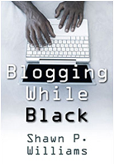Shawn Williams’ Dallas Morning News Column: Black on Black Gun Violence
Here’s a gun violence column that I wrote for Dallas Morning News’ Sunday Points section. It’s already available online and Trey Garrison also wrote a column on the same subject which now available as well.
Trey and I often have a running version of Point/Counterpoint going on our blogs, but I figured we would probably see this one about the same way. Thanks to Sharon Grigsby for the opportunity.
SHAWN WILLIAMS: FIRST, ADMIT BLACK ON BLACK CRIME PROBLEM
(I don’t pick the titles but this one isn’t too bad)
Too often, African-Americans cover their ears when the talk turns to black homicide rates. Yet the statistics are beyond alarming: Blacks make up nearly half of this country’s murder victims, and nine out of 10 times those deaths are the result of a black hand squeezing the trigger of a gun.
It’s time that we talk about — and better understand — the factors at the core of the black-on-black violence that exists throughout the nation.
Some groups are doing just that. Projects like CeaseFire in Chicago, where community leaders intervene in conflicts and promote alternative solutions to violence. In the Dallas area, Vision Regeneration focuses on violence prevention, gang intervention and youth rehabilitation.
But the problem is not unique to South Dallas or Chicago’s South Side. Black neighborhoods all across this nation are wrestling with the same reality. The plots presented of life in Los Angeles by John Singleton’s Boyz N the Hood and in the Baltimore of David Simon’s The Wire exist in America’s largest cities and smallest towns.
Places such as Washington D.C., Philadelphia and San Francisco have tried to intervene by instituting various gun laws. But the U.S. Supreme Court decision striking down key parts of a D.C. weapons ordinance are proof that government policy cannot be counted on to solve the problem. Nor should it be. The answer lies elsewhere.
Maybe the book Outliers is the place to start. There, author Malcolm Gladwell revisits the violent feuds of the Appalachian Mountains that resulted in the death of hundreds of men and made the Hatfields and McCoys part of American lore. Sociologists found that a “culture of honor” was at the root of what seemed only to be a series of misunderstandings and property disputes.
Similarly, I would argue that a “culture of disrespect” exists among African-American males — a disrespect for authority, disrespect for women and disrespect for one another.
It’s almost cliche to point toward the music industry and its glorification of violence to illustrate this truth. Disregard and incivility are as much a part of today’s urban music as the T-Pain voice effect. Hip-hop stations support their listeners by offering free gas and school supplies with one hand, while using the other to slap them down with provocative misogynistic lyrics.
Some of our best community advocates work for — or are associated with — these stations. They should be leading the fight to clean up the airwaves.
More than anything, we must teach black boys from birth to respect other black boys and black men. But first these youngsters must learn to value their own lives, which may aid them in decisions they later make in regard to others.
Martin Luther King, Medgar Evers and Malcolm X were murdered because of the difference they would have made if they had continued to live. Today, young black men are killed because their assailants feel that it makes no difference if they die.
Especially because of the absence of men in so many youngsters’ lives, adults must pay careful attention to interactions between boys, starting in preschool. It’s important to teach them early to respect personal space and to be mindful of when to keep their hands to themselves. Yes, boys will be boys, but smacking a friend in the head today could lead to punching him in the mouth a few years later. The next time somebody could pull out a gun.
Also, civil rights organizations, including the NAACP and National Action Network, should strengthen their local organizations to address the violence in the very communities that they are charged with serving. They should show the same contempt for juvenile misconduct as police misconduct.
There have been instances — such as the Dunbar Village public housing rape case in West Palm Beach, Fla., in 2007 — in which civil rights groups have claimed that black-on-black violence is “outside the scope of our mission.” If that is indeed true, it’s high time for an updated mission.
The fight for equal employment opportunities, equal salaries and equal access to education is as important as they have ever been. But none of that matters when a young man is shot and killed on his way to work or school.
To suggest that African-Americans are born with some sort of natural proclivity for violence — as many white supremacist and hate groups claim — is absurd. But as was the case in 1800s Appalachia, we must look carefully below the surface if we are to comprehend the senseless violence that plagues 21st-century black America.
Most of all, we cannot solve the problem if we refuse to acknowledge that there is one.




